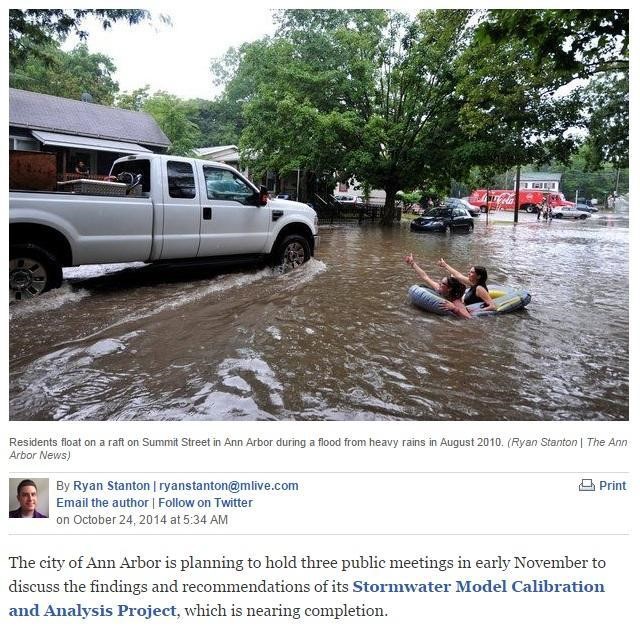Urban flooding is a prevalent problem worldwide, even in the United States. In some areas, a single heavy storm can be enough to cause massive flooding that paralyzes transportation and utility systems completely. This is especially true in Ann Arbor, Michigan, where city officials are now taking steps to remedy local flooding problems soon.

The Stormwater Model Calibration and Analysis Project is a continuation of efforts the city began in 2007 with a stormwater GIS data collection and hydraulic model project.
Prior to 2007, the city didn’t have a complete and accurate inventory of the stormwater management systems within the city.
Completing a comprehensive stormwater inventory and calibrated model, city officials said last year, gives city staff a fuller understanding of how the system functions during significant weather events, and some of the challenges the city has had with neighborhood flooding in certain parts of Ann Arbor.
Some of the heavier storms in Ann Arbor in recent years have left some neighborhoods badly flooded, and residents have complained loudly and publicly to city officials about what they perceive as deficiencies in the stormwater system.
Unfortunately, Ann Arbor’s case is only one of many flooding issues that continue to plague certain areas in the U.S. The good news is that cost-effective stormwater solutions do exist, one of which is the creation of stormwater infiltration systems.
Understanding stormwater infiltration systems
Rainwater replenishes lakes, rivers, underground aquifers, and streams as it enters the soil. This process, called storm water infiltration, is an effective method of managing storm water runoff because it allows users to address both concerns surrounding water quantity and quality. Common storm water infiltration systems include basins, bioretention cells, rain gardens, trenches, and underground Best Management Practices (BMPs) such as perforated pipes, vaults, and bottomless chambers.
What can stormwater infiltration systems do?
Storm water infiltration technologies allow water to infiltrate the soil, effectively eliminating water runoff. In addition, they can be integrated with other systems to filter out harmful pollutants and contaminants, allowing only clean water to pass through. This way, rainwater reaches the earth as it naturally would, thereby refilling aquifers and allowing the natural cycle of water to continue.
High-quality storm water infiltration systems and other top-of-the line storm water solutions are sold by established manufacturers like HydroLogic Solutions.
(Source: New Recommendations for Improvements to Ann Arbor’s Stormwater System Coming Soon, MLive.com, Oct. 24, 2014)





